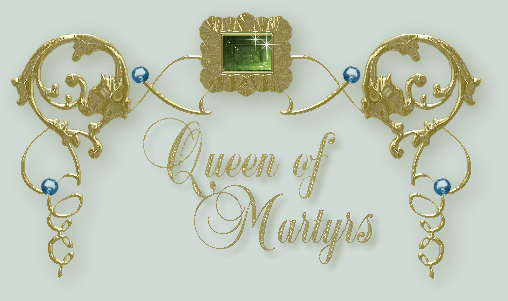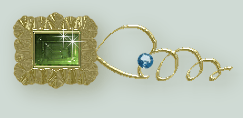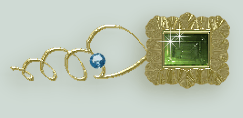VII
The Burial of Jesus
When
a mother is by the side of her suffering and dying child, she
undoubtedly feels and suffers all his pains; but after he is actually
dead, when, before the body is carried to the grave, the afflicted
mother must bid her child a last farewell; then, indeed, the thought
that she is to see him no more is a grief that exceeds all other
griefs. Behold the last sword of Mary's sorrow, which we have now to
consider; for after witnessing the death of her Son on the Cross, and
embracing for a last time His lifeless body, this blessed Mother had to
leave Him in the sepulchre. never more to enjoy His beloved presence on
earth.
That we may better understand this last dolor, we will return to
Calvary and consider the afflicted Mother, who still holds the lifeless
body of her Son clasped in her arms. O my Son, she seemed to say in the
words of Job, my Son, Thou art
changed to be cruel towards me. [Job,
xxx. 21]
Yes, for all Thy noble qualities, Thy beauty, grace, and virtues, Thy
engaging manners, all the marks of special love which Thou hast
bestowed upon me, the peculiar favors Thou hast granted me,---all
are now changed into grief, and as so many arrows pierce my heart, and
the more they have excited me to love Thee, so much, the more cruelly
do they now make me feel Thy loss. Ah, my own beloved Son, in losing
Thee I have lost all. Thus does St. Bernard speak in her name: "O
truly-begotten of God. Thou wast to me a father, a son, a spouse: Thou
wast my very soul! Now I am deprived of my father, widowed of my
spouse, a desolate. childless Mother; having lost my only Son, I have
lost all."
Thus was Mary, with her Son locked in her arms, absorbed in grief. The
holy disciples, fearful that the poor Mother might die of grief,
approached her to take the body of her Son from her arms to bear it
away for burial. This they did with gentle and respectable violence,
and having embalmed it, they wrapped it in a linen cloth which was
already prepared. On this cloth, which is still preserved at Turin, our
Lord was pleased to leave to the world an impression of his sacred
body.
The disciples then bore him to the tomb. To do this, they first of all
raised the sacred body on their shoulders, and then the mournful train
set forth; choirs of angels from heaven accompanied it; the holy women
followed, and with them the afflicted Mother also followed her Son to
the place of burial. When they had reached the appointed place, so how
willingly would Mary have there buried herself alive with her Son had
such been his will r' for this she herself revealed to St. Bridget.'
But such not being the divine will, there are many authors who say that
she accompanied the sacred body of Jesus into the sepulchre, where,
according to Baronius,' the disciples also deposited the nails and the
crown of thorns. In raising the stone to close up the entrance, the
holy disciples of the Saviour had to approach our Blessed Lady, and
say: Now, O Lady, we must close the sepulchre: forgive us, look once
more at thy Son, and bid him a last farewell. Then my beloved Son (for
thus must the afflicted Mother have spoken); then I shall see Thee no
more ? Receive, therefore, On this last occasion that I behold Thee,
receive my last farewell, the farewell of thy dear Mother, and receive
also my heart, which I leave buried with Thee, "The Blessed Virgin,"
writes St. Fulgentius, "would ardently have desired to bury her soul
with the body of Christ." . And this Mary herself revealed to St.
Bridget, saying: " I can truly say that at the burial of my Son one
tomb contained as it were two hearts,""
Finally, the disciples raised the stone and closed up the holy
sepulchre, and in it the body of Jesus, that
great treasure---a treasure so great that neither
earth nor Heaven had a greater. Here I may be permitted to make a short
digression, and remark that Mary's heart was buried with Jesus, because
Jesus was her whole treasure: Where
your treasure is, there will your heart be also. [Luke
xii. 34] And where, may we ask, are
our hearts buried? In creatures---perchance
in mire. And why not in Jesus, Who, although He has ascended to Heaven,
is still pleased to remain on earth, not dead indeed, but living in the
Most Holy Sacrament of the altar, precisely that our hearts may be with
Him, and that He may possess them?
But let us return to Mary. Before leaving the sepulchre, according to
St. Bonaventure, she blessed the sacred stone which closed it, saying:
"O happy stone, that doth now enclose that sacred body, which for nine
months was contained in my womb; I bless thee and envy thee; I leave
thee the guardian of my Son, of that Son Who is my whole treasure and
all my love." Then, raising her heart to the Eternal Father, she said,
"O Father, to Thee do I recommend Him---Him Who is thy
Son at the same time that He is mine." Thus bidding her last farewell
to her beloved Jesus and to the sepulchre, she left it, and returned to
her own house. "This Mother," says St. Bernard, "went away so afflicted
and sad, that she moved many to tears in spite of themselves; and
wherever she passed, all who met her wept," and could not restrain
their tears. And he adds that the holy disciples and women who
accompanied her "mourned even more for her than for their Lord."
St. Bonaventure says that her sisters covered her with a mourning
cloak: "The sisters of our Lady veiled her as a widow, almost covering
her whole face." He also says that, passing, on her return before the
Cross still wet with the Blood of her Jesus, she was the first to adore
it. "O holy Cross," she then said, " I kiss thee, I adore thee; for
thou art no longer an infamous gibbet, but a throne of love and an
altar of mercy, consecrated by the Blood of the Divine Lamb, which on
thee has been sacrificed for the salvation of the world."
She then left the Cross, and returned home. When there, the afflicted
Mother cast her eyes around, and no longer saw her Jesus; but, instead
of the sweet presence of her dear Son, the remembrance of His beautiful
life and cruel death presented itself before her eyes. She remembered
how she had pressed that Son to her bosom in the crib of Bethlehem; the
conversation she had held with Him during the many years They had dwelt
in the house of Nazareth; she remembered Their mutual affection, Their
loving looks, the words of eternal life which fell from those Divine
lips; and then the sad scene which she had that day witnessed again
presented itself before her. The nails, the thorns, the lacerated flesh
of her Son, those deep wounds, those uncovered bones, that open mouth,
those dimmed eyes, all presented themselves before her. Ah, what a
night of sorrow was that night for Mary! The afflicted Mother, turning
to St. John, mournfully said: "Ah John, tell me where is thy Master?"
She then asked the Magdalene: "Daughter, tell me, where is thy beloved?
O God, Who has taken Him from us?" Mary wept, and all who were present
wept with her.
And thou, my soul, weepest not! Ah, turn to Mary, and address her with
St. Bonaventure, saying: "O my own sweet Lady, let me weep; thou art
innocent, I am guilty." Entreat her at least to let thee weep with her:
"Grant that with thee I may weep." She weeps for love; do thou weep
through sorrow for thy sins. Thus weeping thou mayest have the happy
lot of him of whom we read in the following example.
EXAMPLE.
Father Engelgrave relates that a certain religious was so tormented
with scruples, that he was sometimes almost driven to despair; but as
he had the greatest devotion to Mary of Sorrows, he always had recourse
to her in his interior agonies, and felt himself consoled whilst
meditating on her dolors. Death came, and the devil then tormented him
more than ever with scruples, and tempted him to despair. When, behold,
the compassionate Mother seeing her poor son in such anguish, appeared
to him, saying: "And thou, my son, why art thou so overcome with
sorrow? Why fearest thou so much? Thou who hast so often consoled me by
pitying me in my sorrows. But now," she added, "Jesus sends me to
console thee; be comforted, then; rejoice, and come with me to Heaven."
On hearing these consoling words, the devout religious, filled with joy
and confidence, tranquilly expired.
Prayer.
My afflicted Mother, I will not leave thee alone to
weep;
no, I will accompany thee with my tears. This grace I now ask of thee:
obtain that I may always bear in mind and always have a tender devotion
towards the Passion of Jesus and thy sorrows, that the remainder of my
days may thus be spent in weeping over thy sufferings, my own sweet
Mother, and those of my Redeemer. These sorrows, I trust, will give me
the confidence and strength that I shall require at the hour of death,
that I may not despair at the sight of the many sins by which I have
offended my Lord. They must obtain me pardon, perseverance, and Heaven,
where I hope to rejoice with thee, and to sing the infinite mercies of
my God for all eternity. Thus do I hope; thus may it be. Amen. Amen.
|


